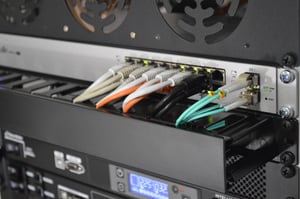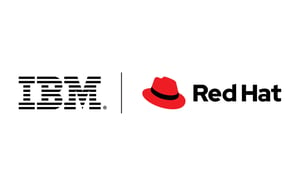Posted by Murad Kablan ● Aug 1, 2019 8:00:00 AM
Data Centers in Digital Transformation | Part 2
This is part two of a continuing series of ideas, thoughts and comments on the digital transformation taking place in data centers today that I am writing as part of an ongoing series.
In my last post I talked about the new enterprise deployment strategies that are changing the  interconnectivity picture for data center operators like colocation providers and cloud managed service providers (MSPs). Today, I want to look at this picture through the lens of the networking vendors selling into these data centers.
interconnectivity picture for data center operators like colocation providers and cloud managed service providers (MSPs). Today, I want to look at this picture through the lens of the networking vendors selling into these data centers.
It is well known that traditional networking vendors are having to re-engineer their network appliances (like firewalls and routers) for today’s hybrid cloud world. Hyperscale cloud providers have created abstracts for vendors detailing how appliances can be re-architected for cloud, like this one from AWS.
But the re-architecting can’t just stop at the appliance. Hybrid cloud and digital transformation strategies demand that the legacy business models of networking vendors, and IT vendors on a larger scale, be re-examined and re-built from the ground up.
Don’t buy it? Let’s take IBM’s recent multi-billion acquisition of Red Hat as an example.
Earlier this month, IBM closed its $34 billion acquisition of Red Hat, which was the biggest software acquisition in history. The huge sum paid was largely attributed by the media to Red Hat’s expertise on hybrid cloud infrastructures, open source, containers and a bunch of the other buzzwords that are filling up the IT news cycle today.

But, I would argue a different perspective. IBM did not pay a 63 percent stock price premium for customized open source software. IBM paid for Red Hat’s understanding of the best ways to engage with and sell to customers as rack-and-stack IT deployments go by the wayside.
For those not familiar with Red Hat, the company sells customized versions of open source software like OpenStack and Linux. Given that the standard versions of these software products are all available for free, the main reason customers use Red Hat is for their consulting, expertise and support. The company understands that their customers need help executing on a digital transformation vision, and is there to be a resource beyond the sales cycle. As a result, their entire business model is built to support customer enablement.
For legacy vendors that have built extensive pre-sales process but do little for the customer beyond putting an appliance in a rack, the model of Red Hat seems entirely out of reach.
And while Red Hat certainly had an enterprise focus in its customer base, I would say the need to build an enablement-focused business model is exponentially for the vendors selling into the data center vertical where providers need to build compelling products that drive margin and reduce customer churn.
This is what we are seeing in our customer engagements. When it comes to networking, colocation and cloud MSPs need partners that can help them build high-margin products, advise on the best ways to position offerings in the market and meet the needs of the end-user in ways they couldn’t before. This becomes even more critical with today’s hybrid deployments where applications and network requirements are rapidly changing. What lives in the rack is no longer a compelling offering on its own.
At Stateless, we are building a business model to support partnering with our customers. In fact, we just added a new enablement department and are partnering closely with our early adopters through the productization and go to market process. Our process includes productization, where we work together to build financial models detailing margin, payback and IRR of taking the platform to market with their end-user tenants as well as identifying the right end-user segments to target, messaging and positioning. From there we work hand in hand to train sales teams, integrate the product into the provider’s existing services portfolio and help raise market awareness of the provider’s new capabilities.
We believe to go far, we need to go together with our customers, and look forward to ushering in this change to the computer network industry.
Topics: Founders, Enablement
